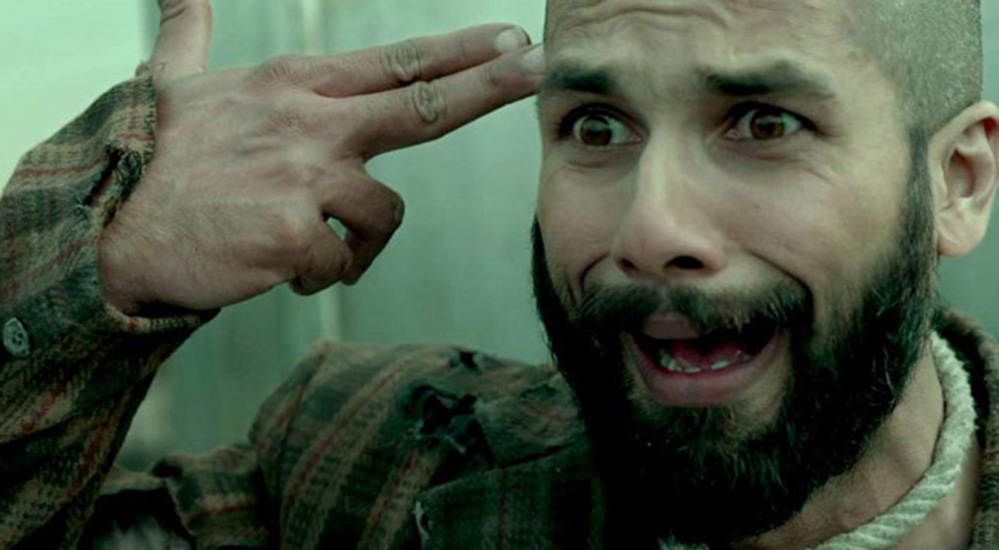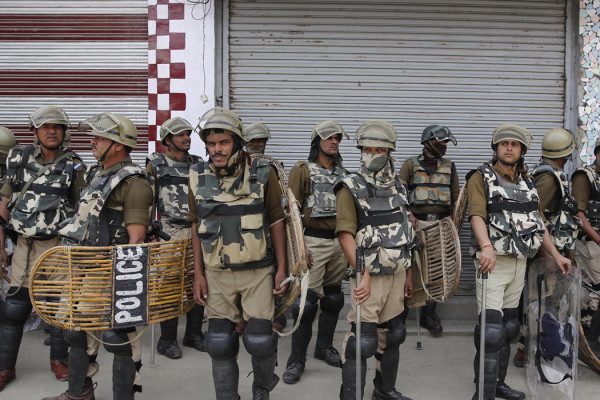The critical and mainstream reception of Haider was overwhelmingly positive barring some questions on the politico-theoretical aspect of the film. Thomas Crowley interrogates the position of Bhardwaj as a filmmaker who represents a dissenting voice. Is he leftist or a little close to the center and thus co-opted? Read on…
Did you know that the Indian Railways publishes the equivalent of an in-flight magazine? It is called Rail Bandu, and it has managed to get some pretty high-profile interviews. Case in point: the October issue, which features a lengthy interview with Naseeruddin Shah, who is remarkably candid, perhaps assuming that very few people actually read Rail Bandu. He chastises former colleagues and discusses the sad fate of many alternative filmmakers.
He goes on at some length: “One is inclined to feel that they wanted to make marketable films in the first place, and they made exceptions because that was what they could afford then. It’s a disconcerting thought that I was involved in all those movies but it occurred to me some time ago how their makers got co-opted as soon as they were a least bit successful. Filmmakers like Basu Chatterjee and Hrishikesh Mukherjee got co-opted by the monsters. I see more or less the same thing happening today.”
Shah goes on to suggest that “the alarm bells have begun to ring as far as Anurag [Kashyap] goes.” Is it time to add Vishal Bhardwaj to this list? Naseeruddin Shah is conspicuously absent from Haider, the last installment of Bhardwaj’s Shakespeare trilogy, after his typically accomplished performances in the first two films of the trilogy, Maqbool and Omkara. Was this a conscious distancing on Shah’s part? If so, he’d be going against common critical opinion, which declared Haider a triumph, a rare Bollywood gem that skillfully mixes brave thematic choices with engaging performances and stunning cinematography. No reviewer is so gushing as Sudhish Kumar, who, writing for The Hindu, declares that Bhardwaj is in “glorious form as he churns out the best of his Shakespeare trilogy,” and that the Gertrude role is “one of the strongest roles ever written for women in modern cinematic history.”
Kumar’s hyperbole is a bit extreme, but his review echoes the critical consensus on the film, which was widely lauded for the performance of the leads, the clever adaptation of Hamlet, and the cinematic splendour of crucial scenes. Dissent from this consensus was generally related to the politics of the film, not to its technical, artistic and cinematic qualities. There was, of course, a knee-jerk political critique of the film from the ultra-nationalist right. How, they asked, could a director portray the Indian army in anything less than an angelic light? How could a film portray such phenomena as mass “disappearances,” repressive curfews, government-sanctioned torture – phenomena that, while undeniably real, make it difficult to believe that India is the wronged party in this conflict.
More reasoned, and more persuasive, is the critique that the film did not go far enough in portraying the oppression in Kashmir and the desire of Kashmiris for self-determination. True, human rights abuses are highlighted; but in the end, the message seems to be that Kashmiris should give up their desire for “revenge” and seek a peaceful solution. We see a cycle of violence, and a false equivalence between two kinds of violence: that perpetrated by a massively more powerful state determined to keep a restive region under its thumb, and that of a resistance movement responding to the state’s systematic closing of all non-violent channels of dissent.
It is understandable that the politics of the film has provoked an acrimonious debate, given the sensitivity of the Kashmir issue, and the nationalists’ eagerness to decree as treasonous any criticism of India’s role in Kashmir. But how to square the varied political responses with the near-universal acclaim for the movie’s cinematic aspects? For more “apolitical” reviewers, was the inclusion of controversial subject material just another spice to add to the masala? Was Bhardwaj trying to show that, even as his films became more and more commercially successful, he is still edgy and provocative?
And that brings us back to the original question of this review: has Bhardwaj been “co-opted by the monsters” of mainstream Bollywood, even as his film sends devoted nationalists running to Twitter? There is a definite transformation from Maqbool to Omkara to Haider: bigger stars, bigger budgets, less restraint, more melodrama, more explicit violence. A constant throughout is the strength of the musical numbers, not surprising given Bhardwaj’s background as a composer, but even these get more sexualised, more romanticised. What happened to the (relatively) restrained noir of Maqbool, the dark symbolism of goats slaughtered for Eid, the careful development of characters that makes the eventual emotional outbursts feel earned and genuine? Sudhish Kumar can say what he wants, but Tabu’s Lady Macbeth is far more convincing than her Gertrude.
Haider‘s outsize melodrama fits uneasily with the true darkness of the state’s repression in Kashmir. But if Bhardwaj had pushed further in his critique of India and its role in Kashmir, it’s likely that his film would never have been a mainstream hit. It may not have even passed the censor board – as it is, the film already went through 41 cuts in order to get a censor certificate. Is that the deal that Bhardwaj made with the “monsters” of Bollywood? That he would make a film palatable to Bollywood sensibilities, especially in its melodramatic style and musical flair, in order to introduce views on Kashmir that, while hardly radical, push the mainstream discourse towards the recognition of India’s brutalities in the conflict?
In an interview, Bhardwaj denies that he has moved away from his roots in more alternative cinema, saying, “I am the same kind of man. You can’t lie on screen. I don’t care about the audience.” In the same interview, while speaking of Haider, Bhardwaj says, “I am not making a political point … but at the same point, I haven’t turned the eye from political issues.” This kind of equivocation is a bit surprising, since, a short while later, he says, “If I am not a leftist, I am not an artist.” His left turns seem to be drifting more towards the center, both in terms of cinematic style and political content. But if he is becoming more Bollywoodised, at least he is questioning the ultra-nationalist take on Kashmir that has dominated Bollywood representations of the region. Perhaps he’s making the monsters of Bollywood slightly less monstrous.


